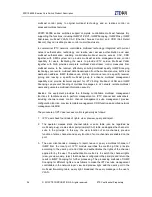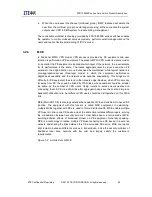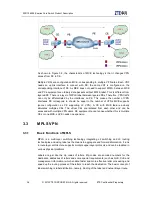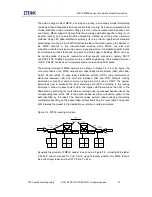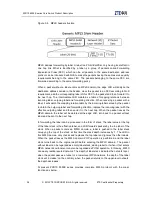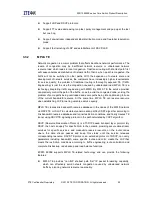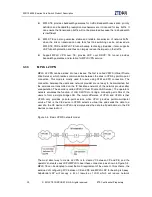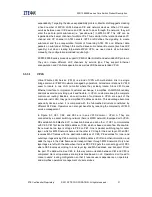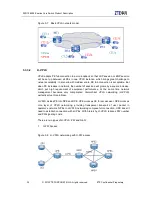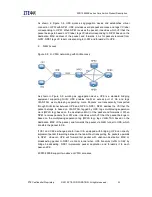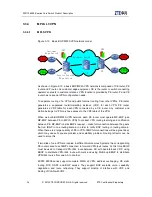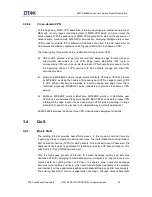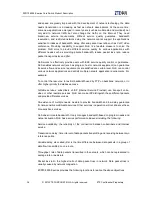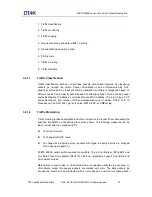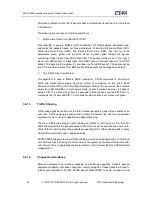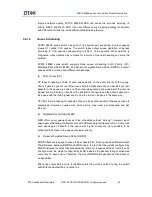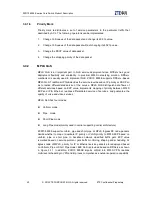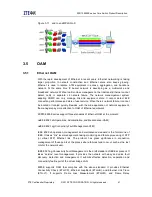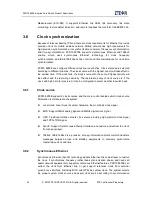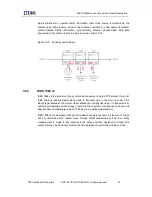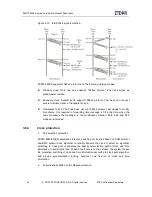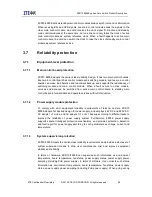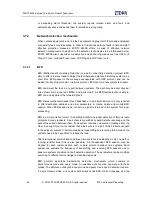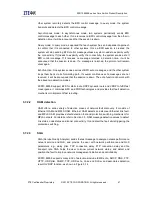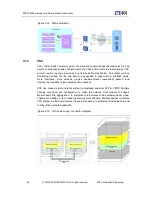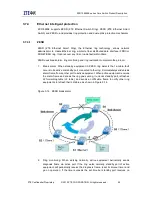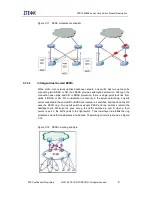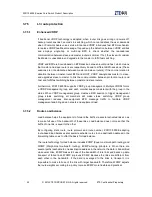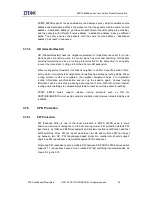
ZXR10 8900E series Core Switch Product Description
38
© 2013ZTE CORPORATION. All rights reserved.
ZTE Confidential Proprietary
information). Marker colors the IP packets based on Meter result and the color is marked
in DS domain.
The following are two types of marking algorithms.
1.
Single Rate Three Color Marker (SrTCM)
This algorithm is used in Diffserv traffic conditioner. SrTCM measures information flow
and marks the packets based on three parameters: Committed Information Rate (CIR),
Committed Burst Size, (CBS), and Excess Burst Size (EBS). We call the three
parameters green, yellow and red mark. When a packet goes through the ingress
monitoring it takes token from CBS bucket first. The packet will be green if it can get a
token from CBS bucket. It takes token from EBS bucket if it cannot take one from CBS
bucket. The packet will be yellow if it can take one from EBS bucket. The packet will be
red if it cannot take a token from EBS bucket. Red packets will be dropped by default.
2.
Two Rate Three Color Marker
This algorithm is used in Diffserv traffic conditioner. TrTCM measures IP information
traffic and marks data packets as green, yellow or red based on two rates: Peak
Information Rate (PIR) and Committed Information Rate (CIR), as well as their related
burst size (CBS and PBS). In color-aware mode, packet is marked as green if it doesn’t
exceed CIR. It is marked as yellow if it exceeds CIR but doesn’t exceed PIR. And it is
marked as red if it exceeds PIR. In color-blind mode, all packets are marked as green.
3.4.1.3
Traffic Shaping
Traffic shaping takes control over the rate of output packets to transmit the packets at an
even rate. Traffic shaping is usually used to match the packet rate with the downstream
equipment so as to avoid congestion and packet dropping.
The major difference between traffic shaping and traffic monitoring lies in the fact that
traffic shaping buffers the packets exceed rate limit to send the packets at an even rate.
While traffic monitoring drops the packets exceed rate limit. Traffic shaping adds to delay
while traffic monitoring doesn’t add extra delay.
ZXR10 8900E supports two-level traffic shaping, as well as shaping based on VLAN and
port. With two levels shaping of VLAN and port, the system can realize multi-level control
over service flows to guarantee the implementation of multi-level QoS and differentiated
management.
3.4.1.4
Congestion Avoidance
Network equipment has limited processing and buffering capability. Packets exceed
equipment capability will cause congestion. Simply dropping of these packets will lead to
“global synchronization”. ZXR10 8900E adopts RED/WRED to avoid congestion and
Содержание ZXR10 8900E series
Страница 1: ...Operator Logo ZXR10 8900E series Core Switch Product Description ...
Страница 2: ......
Страница 10: ......

